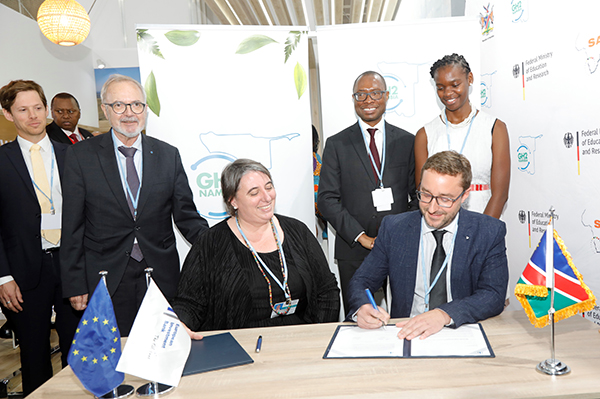Paheja Siririka
The construction of a 90-megawatt power plant, worth N$3 billion, will commence in Swakopmund in early 2023. A new partnership between European Investment Bank (EIB) and Hydrogène de France SA (HDF Energy) will see the development of a green hydrogen power plant at the coast.
Once operational, the Renewable Swakopmund project will generate clean electricity, 24 hours a day, seven days a week, directly contributing to the security of the electricity supply in Namibia.
While the country’s generation mix utilises primarily hydropower, the majority of electricity is imported (about 60% of the total electrical energy requirement), primarily through bilateral contracts from South Africa’s state-owned Eskom and to a lesser extent, the Southern Africa Power Pool (SAPP). Namibia has long relied on Eskom, but that country’s economy has put strains on its domestic electricity generation capacity and, thus, its ability to export.
Namibia has a power purchase agreement with Eskom, which expires in 2025.
The country’s peak demand is over 600 MW. President Hage Geingob; Werner Hoyer, president of the European Investment Bank and Ursula von der Leyen, president of the European Commission, announced the new green hydrogen cooperation at the Namibian pavilion COP27. The agreement was unveiled alongside the announcement of a new sovereign loan facility of 500 million euros by Von der Leyen to develop the green hydrogen sector in the country.
“This partnership represents a concrete step in delivering Namibia’s clean energy ambition. This new investment demonstrates Namibia’s leadership in green hydrogen,” said Geingob. “The European Investment Bank works with leading partners to support clean energy investment across Africa. I am pleased that the EIB is working closely with HDF Energy to harness Namibia’s solar and wind potential, and unlock opportunities for the energy transition,” said Hoyer.
He added: “Our agreement confirmed at COP27 with HDF will help to accelerate large-scale deployment of green hydrogen infrastructure in Namibia, based on proven investment in South America”.
The construction of Africa’s first solar-green hydrogen power plant in Namibia will begin in the first quarter of 2023, according to a senior regional government official. Councillor Wilfried Groenewald from the Swakopmund municipality said this week that HDF Energy has already secured land, measuring 400 hectares east of the town, famed for its clean beaches and German colonial architecture.
“Government has already given the French company its blessings to go ahead with the project,” he said. This will see about 90MW of solar panels powering electrolysers to produce hydrogen that can be stored.
Namibia is one of the world’s sunniest and least densely populated countries. The country wants to harness its vast potential for solar and wind energy to produce green hydrogen and position itself as a renewable energy hub in Africa. HDF Energy is a global pioneer in hydrogen energy. HDF develops, finances and operates multimegawatts Hydrogen-Power plants.
These plants provide continuous or on-demand electricity from renewable energy sources (wind or solar), combined with high-power fuel cells supplied by HDF.


